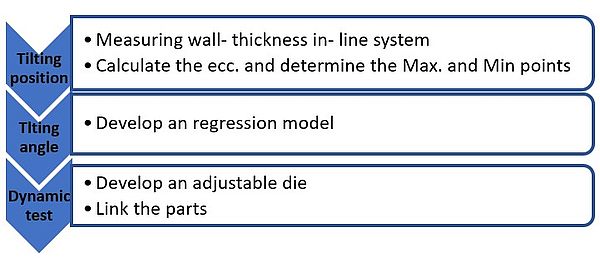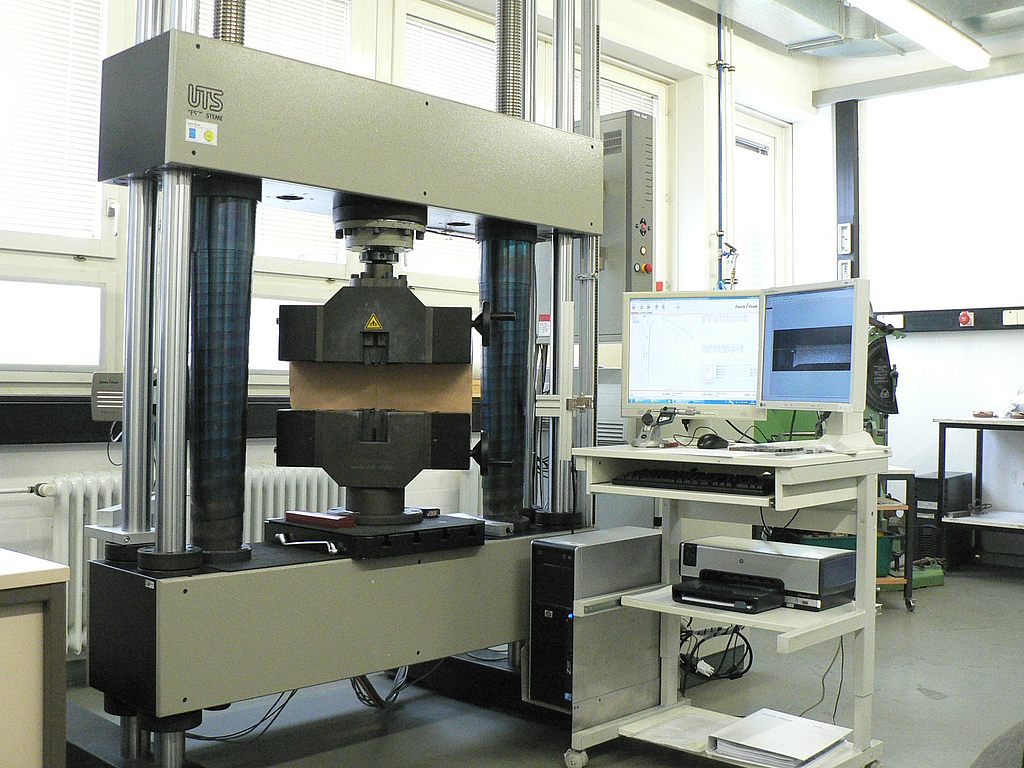Designing an inline thickness-measuring- adjustable die for eccentricity control
Contact Person: Fariba Heidarian
This study was performed within the AIF project no. 18261N. Based on the results of a former project (AIF no. 17263N) a device was developed and designed for drawing tubes with tilted dies for in-line measurement of the tubes’ wall thickness and eccentricity control. The major parts developed are: Mechanical device, inline measuring method, software and control features.
The wall thickness of the tube is measured inline during the drawing process using five ultrasonic (US) sensors around the circumference. With these data the position of the max. and min wall thickness of the tube can be determined assuming a sin-function behaviour of the thickness change. Developing a regression model to find the relationship between the involved parameters in tube drawing, the materials’ properties, and the new tube’s eccentricity was an important part of this research. The measured wall thickness and the developed regression model are used to predict the optimum tilting angle and tilting position of the die for a controlled change of the eccentricity. Minitab software as a statistic tool was used to determine and select the effective independent variables for a suitable regression model. In the case of more than one independent variable, the multiple regression model is more accurate than simple regression models. The main advantage of the developed regression model in this study lies in improving the performance of the tube drawing process that is conducted by an inline measuring self-regulation tilted die machine. The adjustable die is enabled to tilt around 360° for ± 4° through hydraulic cylinders and a calotte. The US sensors and their software (USIP 40) were supplied by GE Company. For coupling the measuring device and the mechanical part a Siemens PLC (S7-1500) with TIA Portal was selected as a control system. The results indicate that through applying such an adjustable dynamic system, the eccentricity after tube drawing can be improved by more than 50% in one process step. In the next step, the device will be tested in the industry.

